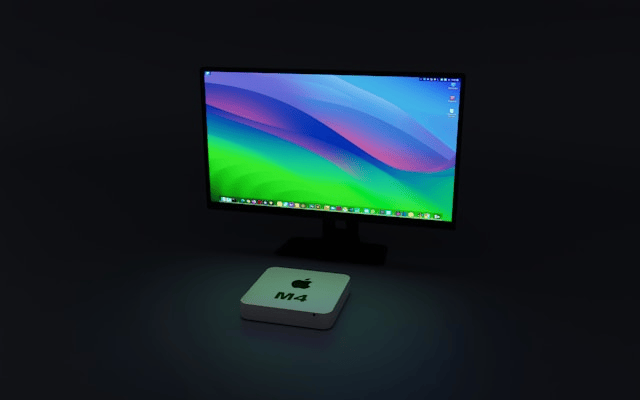Running macOS on non-Apple hardware has fascinated tech enthusiasts for years. Whether you’re a developer who needs Xcode, a designer who prefers Apple’s ecosystem, or simply a curious PC user, you may have wondered how to install macOS on PC.
This process is often called building a Hackintosh a PC configured to run Apple’s operating system. While it’s possible, it comes with challenges, limitations, and risks you need to understand before diving in. In this guide, we’ll explain system requirements, step-by-step installation instructions, common issues, and alternatives like virtualization.
Can You Install macOS on a PC?
The short answer: yes, but with caveats. Apple designs macOS to run exclusively on Mac hardware. According to Apple’s End User License Agreement (EULA), installing macOS on non-Apple machines isn’t officially permitted. That means building a Hackintosh can put you in a legal gray area.
On top of that, not all PC hardware is compatible with macOS. Even if you manage to install it, system updates can break functionality, and drivers (known in the Hackintosh world as “kexts”) may not support every component.
Still, many tech hobbyists experiment with macOS on Windows PC setups to explore the operating system without purchasing a Mac. If you decide to try it, proceed with caution.
System Requirements
To install macOS on PC successfully, your hardware must be as close as possible to a real Mac. Here’s what you’ll need:
-
Processor: Intel CPUs are most compatible. While AMD CPUs can work, they often require additional patches and complex setup.
-
Graphics card: Integrated Intel graphics or certain AMD/NVIDIA GPUs that are known to work with Hackintosh builds.
-
RAM: At least 4GB (8GB or more recommended).
-
Storage: A dedicated hard drive or SSD for macOS.
-
Motherboard: One that allows BIOS/UEFI customization.
-
USB drive: Minimum 16GB for creating a bootable installer.
Software Tools Needed
-
A copy of macOS (downloaded from the Mac App Store or through recovery tools).
-
Bootloader software such as OpenCore (recommended) or Clover.
-
Configurator tools to edit your EFI and kexts.
How to Install macOS on PC (Step-by-Step)
Here’s a simplified Hackintosh guide to help you understand the process:
1. Create a Bootable macOS USB Installer
-
On a Mac, download macOS from the App Store.
-
Use a tool like UniBeast or manually create a bootable installer with Terminal.
-
Install OpenCore or Clover bootloader onto the USB drive.
2. Configure Your BIOS/UEFI Settings
-
Disable Secure Boot.
-
Enable AHCI mode for storage.
-
Turn off fast boot options.
-
Set USB boot as the first priority.
3. Boot and Begin Installation
-
Insert the bootable USB into your PC.
-
Boot from USB and select the macOS installer in OpenCore/Clover.
-
Partition your target drive using Disk Utility.
-
Proceed with the macOS installation.
4. Post-Installation Setup
-
Install necessary kexts (drivers) for Wi-Fi, audio, and graphics.
-
Configure your EFI partition with OpenCore for smoother booting.
-
Adjust settings for power management, sleep, and display.
Troubleshooting Common Issues
Installing macOS on Windows PC hardware can be unpredictable. Here are some common problems and fixes:
-
Boot loops or crashes: Often caused by incorrect EFI settings or missing kexts.
-
No Wi-Fi: Some network cards are unsupported; you may need to replace them with Hackintosh-friendly hardware.
-
Graphics glitches: Ensure your GPU is compatible and that you’ve enabled the right patches.
-
Kernel panics: Typically related to mismatched system definitions or kext conflicts.
Because Hackintosh builds vary, you’ll likely spend time researching fixes specific to your components.
Alternatives to Installing macOS on PC
If creating a Hackintosh feels too complex, there are easier ways to try macOS on Windows PC hardware:
-
Virtual Machines: You can run macOS in VMware or VirtualBox. Performance may be limited, but it’s simpler and safer than a Hackintosh.
-
Refurbished Macs: If you need macOS for development or design, consider buying a secondhand Mac Mini, MacBook, or iMac. This ensures compatibility and avoids legal concerns.
Conclusion
Learning how to install macOS on PC can be exciting for tech enthusiasts, but it’s not for everyone. Hackintosh builds require careful hardware selection, technical setup, and ongoing troubleshooting. Even after a successful install, stability is never guaranteed.
If your goal is simply to explore macOS or run macOS apps, using a virtual machine may be a better option. And if you need reliability, an official Mac remains the safest choice.









